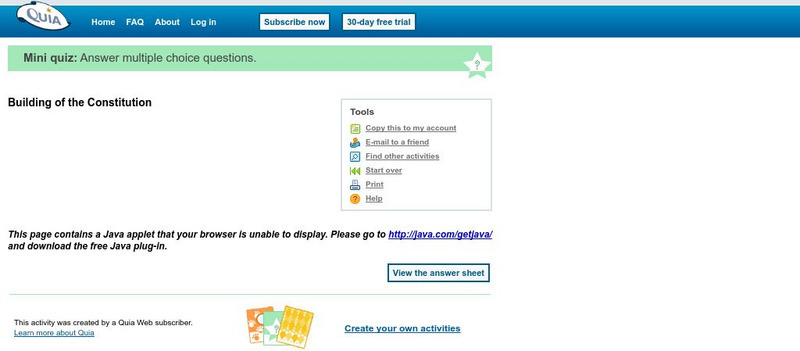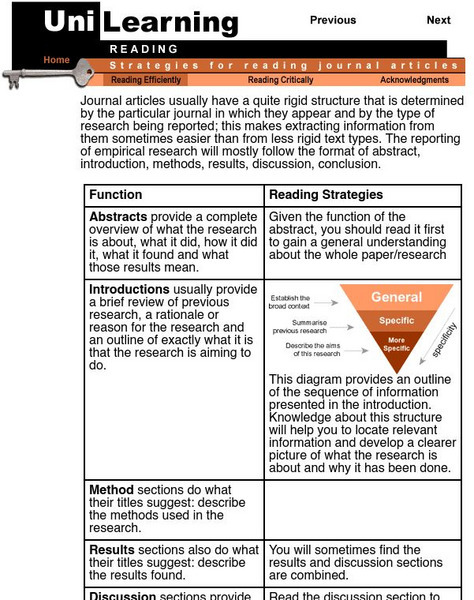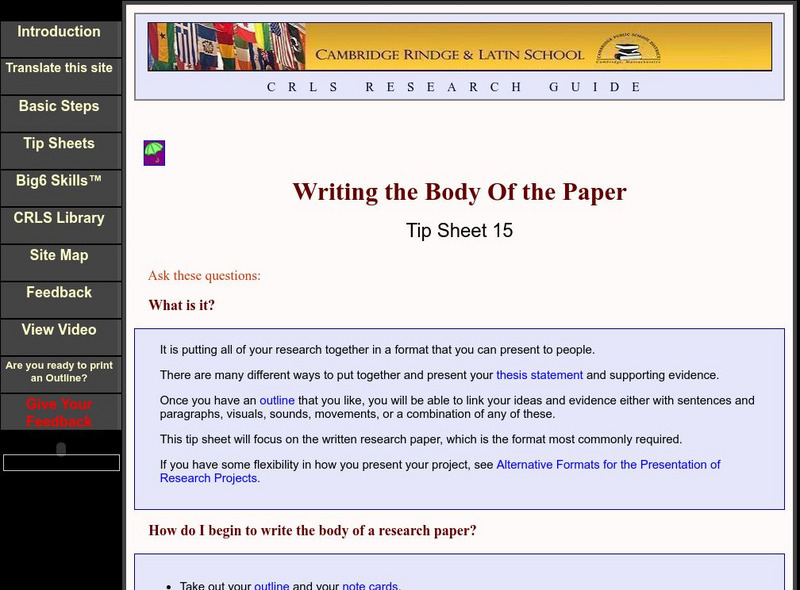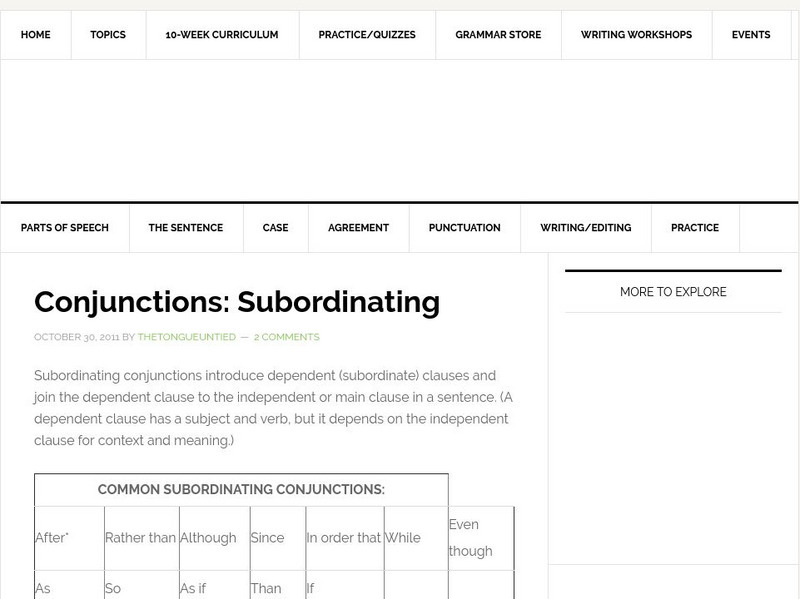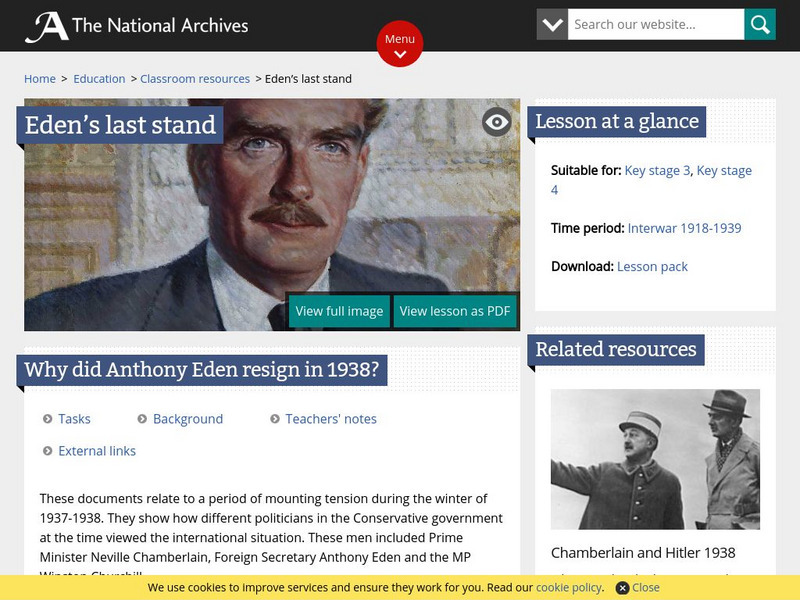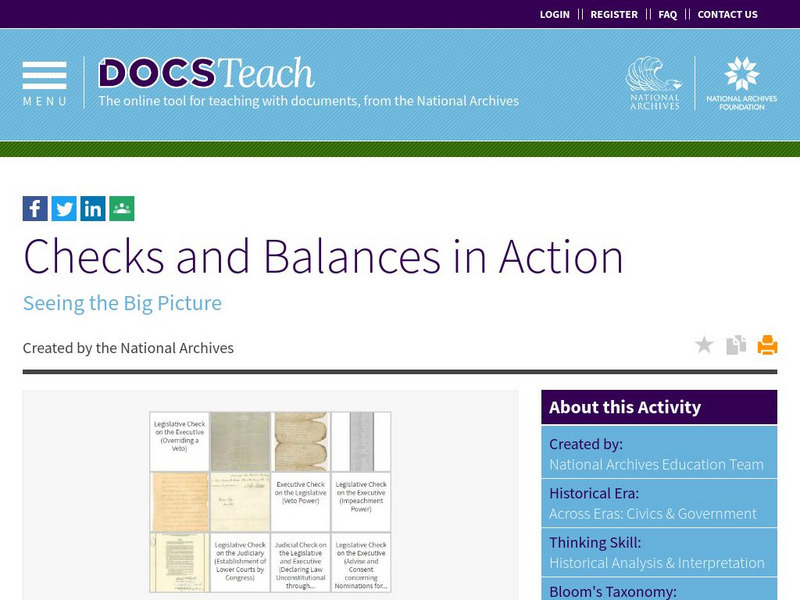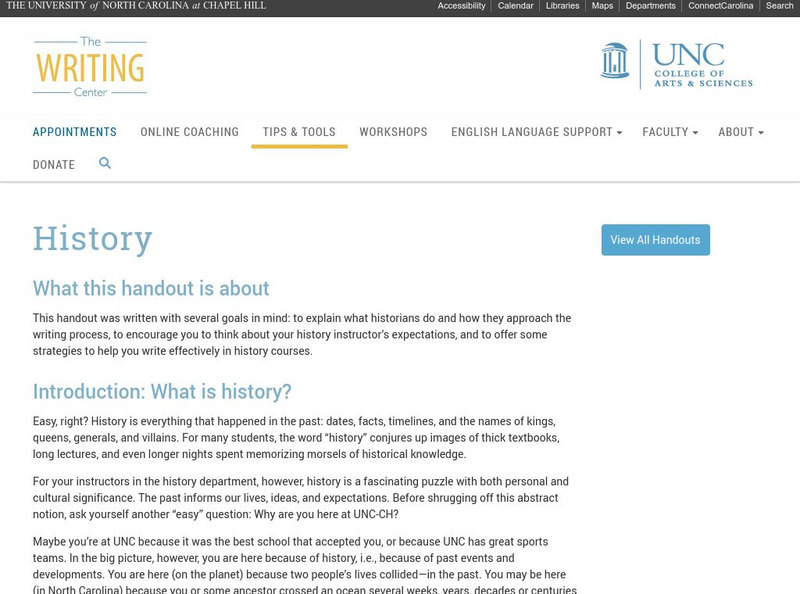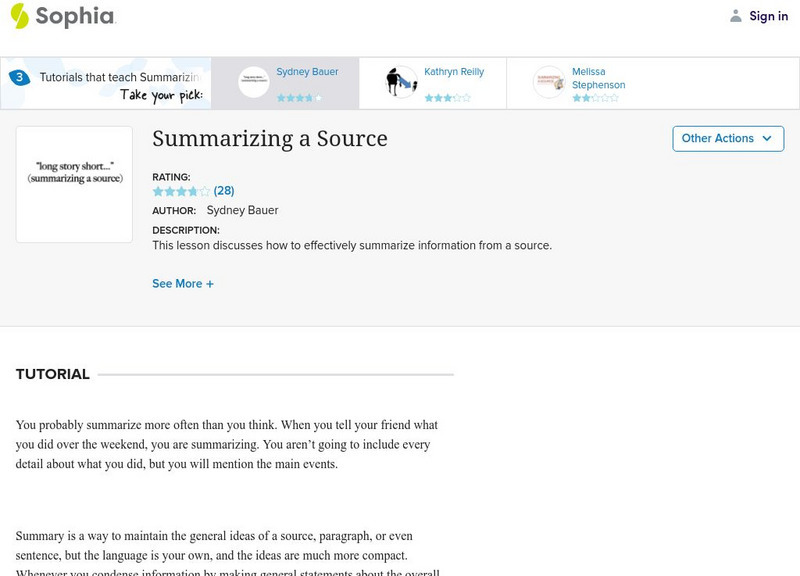Quia
Quia: Building of the Constitution
Quiz yourself on how well you know the events leading up to writing the United States Constitution.
City University of New York
College of Staten Island Library: How to Write an Essay
Resource defines what an essay is, the parts of an essay and their functions, and also discusses the editing process and how important it is to check a draft for completeness and high quality. Includes a link to an online guide to citing...
University of Calgary
University of Calgary: Basic Elements of English
Sections include parts of speech, sentence elements, punctuation, and word use. Also includes a "brief explanations of common writing errors." The tutorials also include interactive quizzes to check your understanding.
Annenberg Foundation
Annenberg Learner: Legislatures and Democracy Recap: The Lawmakers
You are a congressperson trying to pass your education bill. Join in the extensive public debate, committee work, and parliamentary maneuvering necessary to achieve majority legislative support for your bill.
Other
Uni Learning: Strategies for Reading Journal Articles
Clear explanation of how journal articles tend to be structured, as well as tips for extracting information from each part. Includes sample, color-coded exercises.
US Government Publishing Office
Ben's Guide to u.s. Government: Learning Adventures: Branches of Government
Beginning page of a Learning Adventure examines what parts of the Constitution give the branches of the Federal Government their specific powers. Those three parts are Article I, Article II, and Article III.
Other
Georgia Perimeter College: Learning and Tutoring Center: Communications Handouts
This index provides links to educational resources on various English topics. Some topics included are related to punctuation, parts of speech, usage, different types of writing, and analytical questions for various genres of literature.
University of Washington
University of Washington: Introductory Paragraphs
This writing center tutorial explains why the opening paragraph is so important. It also addresses six common problems to avoid.
Discovery Education
Discovery Education: A Nation's Voice
A Nation's Voice is a lesson plan that uses internet sites, magazines and books, electronic encyclopedias and databases to understand the policy making of the U.S.
Cambridge Rindge & Latin School
Cambridge Rindge & Latin School: Writing the Body of a Research Paper
An excellent tip sheet on how to write and create the bulk of a research paper: the body includes in-depth information, examples, as well as links to earlier steps in the process such as thesis statements, notecards, outline,...
The Tongue Untied
The Tongue Untied: Subordinating Conjunctions
Maintained by the University of Oregon School of Journalism and Communications, this site offers a standard definition and numerous examples of subordinating conjunctions, using journalistic (newspaper-like) examples. Provides list of...
Constitutional Rights Foundation
Constitutional Rights Foundation: Centralized vs. Decentralized Rule: The Articles of Confederation
Activity comparing the Articles of Confederation to the Constitution. Using a variety of articles, students research and create a chart with explanations and critical comparisons of the two governing documents.
National Archives (UK)
National Archives Learning Curve: How to Read a Document
This site is a lesson on Document Analysis using a letter written by Anthony Eden to PM Chamberlain in late 1937.
Ohio Test Prep
Ohio Test Prep: Module 3: Government
Learning module on American Government prepares students to take the Ohio state tests in Social Studies on topics including Laws, U.S. Constitution, Rights and Responsibilities, Framework of Government, and Separation of Powers. Includes...
Tom Richey
Tom richey.net: Historical Writing: Writing Resources for Students
Resources for helping students to write historical essays. Includes a movie trailer to demonstrate the traits of a good introduction, tips for writing a paragraph, tips for formal writing, and guidelines for citing sources.
US National Archives
Docsteach: The Legislative Process: Congress at Work
Students will analyze historical records of the House and Senate to understand the sequence of steps in the legislative process. The students will work collaboratively to study documents and identify the step in the process that each...
US National Archives
Docs Teach: Checks and Balances in Action
In this activity, students will analyze documents that span the course of American history to see examples of 'checks and balances' between the legislative, executive, and judicial branches in action. Students will then match the...
Colorado State University
Colorado State Writing Center: Critical Reading
In-depth instructions on critical reading with lots of links to more reading guides and activities. A good site to help improve reading skills to become a better writer.
University of North Carolina
University of North Carolina: Writing Center: Handouts: Writing About History
Students are provided with an eight-step process for completing academic writing on historic topics. Steps include understanding the topic, making an argument, organizing information and supporting details, and other important writing...
Sophia Learning
Sophia: Paper Writing: Outlines
Show students how essential an outline is to writing a paper. This source provides explanations for writing an outline and information about how to create both formal and informal outlines.
Sophia Learning
Sophia: Summarizing a Source
Information that can be read or listened to that discusses two methods of how to write effective summaries as well as how to avoid plagiarism when summarizing informational texts. Finally, examples of literary summaries are provided....
Harvard University
Harvard College Writing Center: How to Do a Close Reading
A brief explanation of the tasks involved in doing a close reading in preparation for writing. This writer breaks the process into three steps which involve annotating the text, looking for patterns, and asking questions of the text.
ReadWriteThink
Read Write Think: Text Features: Non Fiction [Pdf]
Compare the printed page to an electronic web page and use this activity to discuss the similarities and differences. A cross-curricular tie-in with ecosystems. Could easily be adapted to another subject area.
Sophia Learning
Sophia: Paper Writing: Introduction, Body, Conclusion
This site shows students how to write an introduction, body, and conclusion to create a complete paper. Students see examples of two different types of introductions, get ideas for attention grabbers, gain understanding of the type of...


